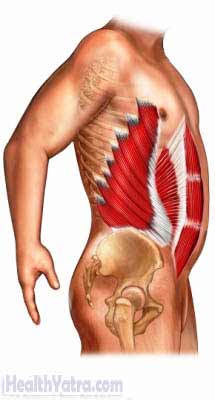Definition
A hip pointer is a bruise to the upper part of your hip. Many muscles, including abdominal muscles, attach at this site. A hip pointer can involve injury to bone and soft tissue.

Causes
Hip pointers are caused by a direct blow to the bony part of the pelvis. This commonly occurs in football or hockey when another player’s helmet hits the pelvis. It can also occur by taking a hard fall onto the hip.
Risk Factors
Participating in contact sports increases your chance of developing a hip pointer. Football players and hockey players are especially at risk. Hip pointers are also more common while playing basketball and soccer.
Symptoms
Symptoms of a hip pointer include:
- Severe pain
- Tenderness
- Pain with activity
- Swelling
- Bruising
- Soreness
- Muscle spasms
- Decreased range of motion
Diagnosis
Your doctor will ask about your symptoms and medical history. A physical exam will be done. You may be referred to specialist. An orthopedist focuses on bones and joints. A sports medicine physician focuses on sport-related injuries.
Images may need to be taken of structures inside your body. This can be done with x-ray.
Treatment
Hip pointers are treated with:
- Rest
- Ice
- Non-steroidal anti-inflammatory drugs (NSAIDs)
- For severe pain, some athletes may receive an injection of a numbing medicine and/or steroid directly into the hip
- Physical therapy to help you regain mobility and build muscle strength
It may take several weeks to heal and for normal movement to return. Check with your doctor about a timeline to return to normal activities. You may be able to return to activity as soon as you feel you are able.
Prevention
Hip pointers occur through direct blows to the affected area. This is often accidental. As a result, not all hip pointers can be prevented. However, make sure to wear proper sports equipment and padding to decrease your chance of any injury.
